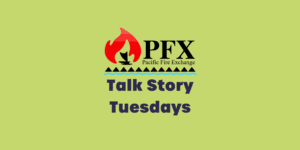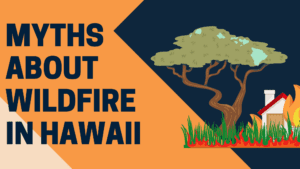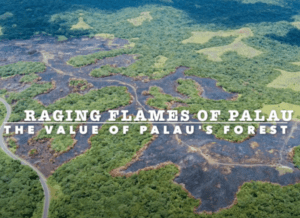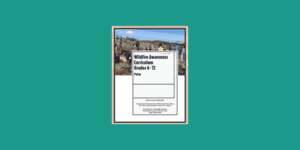Members of our community from three islands will talk about their efforts in reducing the threat of wildfire across boundaries. Robbie Justice of Forest Solutions, Inc. on Hawai‘i Island, Jeremie Makepa of ‘Āina Alliance on Kaua‘i, and Erin Peyton of Paniolo Hale Firewise Committee on Moloka‘i share their lessons learned in reducing hazardous fuels and how agencies, landowners and residents can work together collectively.
Members of our community from three islands will talk about their efforts in reducing the threat of wildfire across boundaries. Robbie Justice of Forest Solution, Inc. on Hawai‘i Island, Jeremie Makepa of ‘Āina Alliance on Kaua‘i, and Erin Peyton of Paniolo Hale Firewise Committee on Moloka‘i share their lessons learned in reducing hazardous fuels and how agencies, landowners and residents can work together collectively.
As wildfire, drought and invasive species increasingly impact native ecosystems, plants and animals, our remaining natural and cultural Hawaiian heritage is more threatened than ever.
In this Pacific Fire Exchange talk story Q&A session, we speak with Dr. Clay Trauernicht and Dr. Alyssa Anderson, University of Hawai`i at Mānoa about wildfire in Hawai`i in the context of Hawaiian language newspapers as well as the historical landscape changes of the 20th century.
Dr. Clay Trauernicht fire & ecosystems scientist with UH Mānoa Cooperative Extension and Dr. Alyssa Anderson, Postdoctoral Fellow, Pacific Islands Climate Adaptation Science Center will present wildfire in Hawai‘i in the context of Hawaiian language 19th century “nupepa” (newspaper), as well as the historical landscape changes of the 20th century.
What: Are Hawai’i forests adapted to fire, like the Western mainland? What part of the United States has the highest % of land burnt in wildfires? (Hint- it’s not always California!) Do…
Learn about preventing the threat of fires to Palau’s population and forest, a source of cultural pride and biological diversity.
A multi-partner, standards-aligned, culturally-relevant wildfire awareness tailored to Palau’s school curriculum (grades 6-12).
A multi-partner, standards-aligned, culturally-relevant wildfire awareness tailored to Yap’s school curriculum (grades 6-12).
Fire Communication & Education, Western Pacific A multi-partner, standards-aligned, culturally-relevant wildfire awareness tailored to Guam’s school curriculum (grades 6-12).







